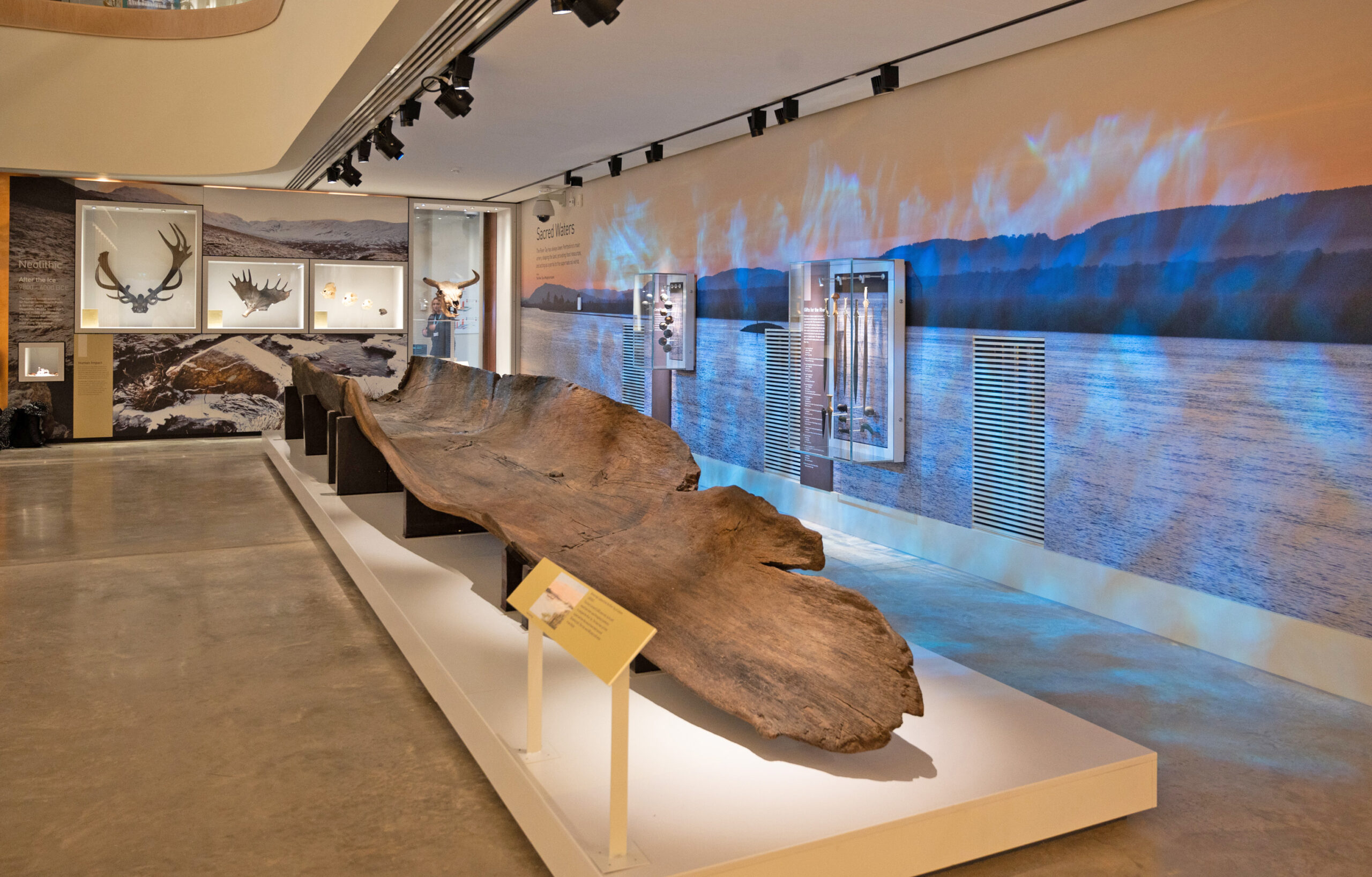Enter a search term above to search our website
Pages
News
Star Objects

A 3,000-year-old boat hewn from a single tree trunk, discovered just a few miles from this museum, the Carpow logboat highlights the continuing importance of the River Tay in everyday and ceremonial life.
At the time it was cut-down, the tree was around 400 years old and likely to have been up to 30 metres tall.. Using a range of bronze tools, including axes, the log was hollowed out and turned into a boat.
The logboat – the oldest and best preserved in Scotland – has been radiocarbon-dated to around 1,000 BCE. With a crew of two, the boat could readily have moved cargo up to a tonne in weight, around the estuary and along the Rivers Tay and Earn. Cargo could have included stone, timber, grain, reeds, peat, metalwork and animal carcasses.
The boat could have carried up to 14 people across the river. The Carpow stretch of the river had several ferry sites as recently as the 19th century, some of them operational since at least the Roman Iron Age. The boat’s find-spot is very close to one of the busiest of the ferry crossings, Ferryfield of Carpow.
In making offerings to the river as part of worship, a logboat would have made an ideal platform from which to cast objects into the Tay. A boat would be essential if offerings were to be made in the middle of the river. Perhaps the logboat was deliberately sunk as one of the offerings.